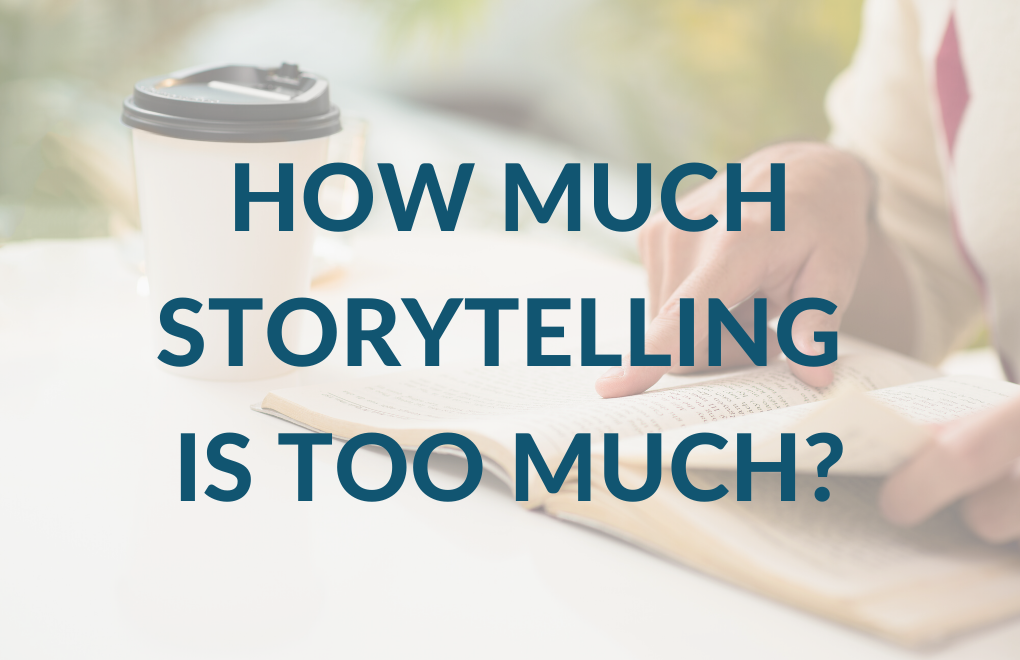Storytelling has a lot of buzz in the content marketing world. Let’s look at a case study to find the right balance between telling and selling.
Let me start by telling you a story.
Last spring I was feeling impatient. Worried. Scared, even.
Covid-19 vaccine had entered the market and the vaccinations were progressing nicely in my region. But it wasn’t my turn yet.
Almost every day, I would impatiently navigate the local government website to see if the vaccination criteria had been changed to include me.
Day after day, the answer was no.
Why was I so eager for my turn to come? Why couldn’t I just wait until the most vulnerable people got their dose first, and it would then be my age group’s turn?
Because I am vulnerable myself. Due to a chronic illness, I’m part of the at-risk population. Not the most vulnerable part, but a risk group nonetheless.
Before getting my vaccine, I was so fed up with living with fear. Worrying every day of catching the virus, that in the worst case, no matter how improbable, could kill me.
For a mom of a 5-year old, that’s a startling thought.
Because of fear, worry and sleepless nights, I was eager to get my vaccine. For the same reason, it’s been hard for me to understand why vaccination coverage hasn’t reached the target yet.
Why are so many people saying no to this tiny jab that could protect not only them, but the overall economy, mental health, and people around them.
People like me and my daughter.
Story that proves a point
I don’t usually open up about my health, family and private life in this blog or my social media.
This time I decided to make an exception to prove a point.
That point is not the significance of the vaccine itself, because that would be a whole other discussion and there are plenty of other arenas for those arguments.
This story is shared to illustrate the power of storytelling in communication. Stories are a powerful way of cutting through the noise, getting a message across and connecting with the audience.
While reading my story, did you nod along in agreement?
Felt tempted to share it with someone?
Found yourself formulating your own, differing opinion?
Storytelling can do all of those things: confirm our views, inspire opposite opinions, impact our thinking, foster communities and launch discussions. It speaks to our heart and makes us engage, whether we agree or disagree.
When storytelling falls short
In business, storytelling is a tool to impact buying decisions, nurture loyal customer relationships and create communities around brands.
However, stories can also be counterproductive, or at least insufficient.
A reader who is against, or is hesitant about the covid vaccine, for example, wouldn’t likely be convinced to book a vaccine appointment based only on my worry-infused account. If they are worried about the side effects, they wouldn’t be swayed by stories of worried moms or bankrupt entrepreneurs.
To take another example from the business world, if a business owner discussing with a copywriter is worried about the blogging budget, they won’t make the decision based on a story of how relieved their team will feel when the copywriter steps in.
Both the vaccine critic and business owner will need facts.
Balancing stories with facts
If communication is drowned in stories and emotion, it might attract a reader’s attention but it won’t likely be enough to close the deal.
Overflow of storytelling can also lead to the audience feeling under evaluated: as if they were only told one side of the story or hidden something.
The fact the vaccine critic might need is the probability of different side effects and what they mean in their situation.
The hesitant business owner, on the other hand, might need to hear how much regular blogging can improve site traffic and bring new leads.
While stories are the journey we take our audience on, they do need a vehicle to ride on. If the story is a river, facts are the lifeboat.
Three things to know about storytelling in business
What can we take away from this discussion to communicate better as a business and as teams?
I want to leave you with these three thoughts:
- Your company’s communication needs stories. They are a powerful way to attract your audience’s attention and to connect with them emotionally: to let them know your business is the right choice for them.
- As important as stories are, they need to be balanced out with facts. Sometimes both elements are needed in the same piece of content; sometimes it’s enough to maintain the balance over the long term.
- A good way to ensure a healthy balance of facts and stories in your company’s communication is to conduct a storytelling audit every 3-6 months. Regular auditing guarantees that storytelling stays a relevant part of your content strategy in a way that resonates with your audience and consistently helps your business grow.
Enjoy telling your business’ story – and your audience will enjoy consuming them.







Trackbacks/Pingbacks